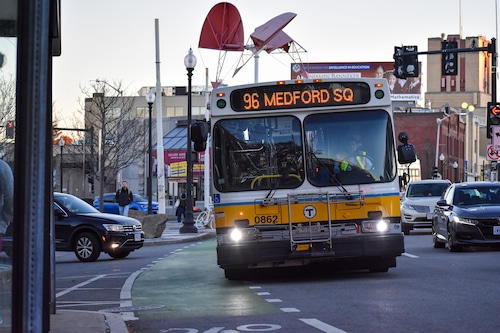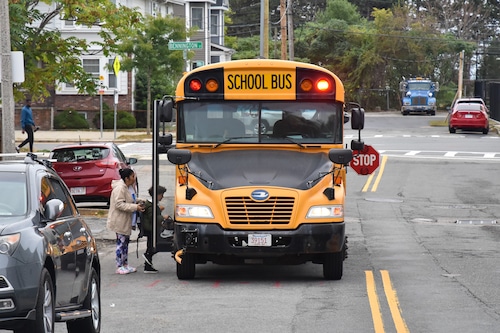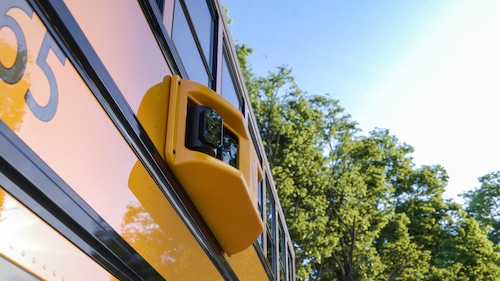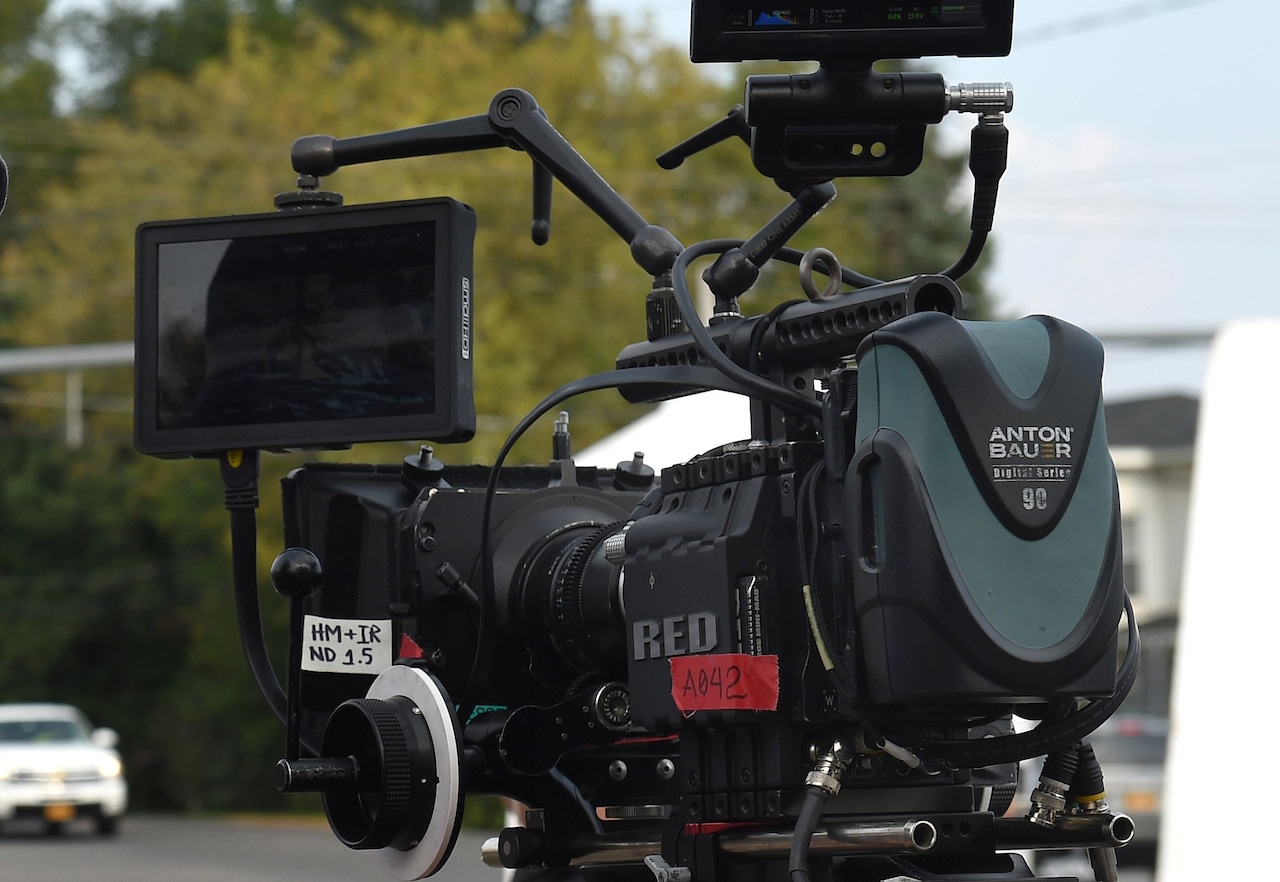Two bills allowing communities to issue traffic tickets with the help of surveillance cameras advanced through the state Legislature amid a flurry of end-of-year votes and now head to Gov. Maura Healey’s desk for her consideration.
The first bill would allow cameras affixed to school buses to capture when drivers fail to stop for the buses as children board or disembark.
In some communities, pilot programs testing the cameras have shown that drivers illegally pass school buses routinely, yet state law has prohibited using the images to issue traffic citations.
The second bill would allow communities to use cameras to ticket drivers illegally parked or stopped at bus stops or in designated bus lanes.
In addition to causing delays for public transit, cars obstructing bus-only lanes and stops can make boarding a bus difficult for some riders, particularly people with disabilities.
Massachusetts law does not yet allow camera-based enforcement of traffic laws. And the two proposals approved by the Legislature would still stop short of placing ticketing power entirely in the hands of automated cameras.

An MBTA bus in Porter Square in Cambridge. (Will Katcher/MassLive)Will Katcher/MassLive
Rather, images of possible school bus-passing violations would be forwarded to police to confirm and issue citations. Under the second bill, images of bus lane or bus stop parking violations could be reviewed by police or other designated public employees before tickets are issued.
Healey has until Jan. 9 to act on the bills.
Opposition to camera-based traffic enforcement has often focused on due process, privacy, and surveillance concerns.
But the American Civil Liberties Union of Massachusetts, a leading local watchdog for surveillance technology, does not oppose allowing cameras to help with ticketing drivers, as long as legislators establish strict safeguards for how the devices and images they capture are used.
In Peabody and Salem, local officials conducted two well-publicized pilot programs to illustrate the perils schoolchildren face as they cross busy streets to ride the bus.
While motorists are supposed to brake when traveling behind or toward a stopped school bus that has its red lights flashing and stop sign extended, many do not.
During the first seven weeks of this school year, cameras mounted on Salem buses captured drivers failing to properly stop nearly 1,100 times. In Peabody, more than 660 drivers illegally passed school buses during roughly the same period.
Videos released by city officials and BusPatrol, the company that supplied the cameras, showed repeated near misses as cars blew past children waiting to cross the street.
Passage of the bill comes roughly a year after a driver struck a 9-year-old boy in Haverhill as he crossed the street after stepping off a school bus.
The child was airlifted to a Boston hospital with severe injuries. The driver is awaiting trial on charges that include drunk driving.
Two months later, a Brockton student escaped serious injury after he was hit by a sedan while exiting a school bus.

A student boards a school bus in East Boston on Sept. 25, 2024. (Will Katcher/MassLive).Will Katcher/MassLive
School officials and police in Salem and Peabody said distracted driving, ubiquitous in the smartphone era, is often to blame.
“We never realized the depth of the problem until those cameras were mounted on buses,” Peabody Police Capt. Scott Richards told MassLive in October. “It’s much worse than we realized.”
If Healey signs the bill, local school committees would still need to give the thumbs up before school officials can install the cameras on buses.

Cameras installed by the company BusPatrol on school buses record when a driver illegally passes the bus when its red stop sign is extended. (Courtesy of BusPatrol).Courtesy of BusPatrol
Under the bus-passing bill, images of any potential violations would be forwarded to police to determine whether the violator should be ticketed. The citation would go to the registered owner of the car and would be the same as if a police officer observed the infraction in person.
The violation would be noted on the owner or operator’s driving record, but it would not qualify as a criminal conviction or moving citation that would impact insurance premiums.
Under the second bill, fines of $25 to $125 would go to the registered owner of a vehicle stopped in a bus lane. The fine would be $100 if the vehicle is parked at a bus stop. The violation would not be entered on the person’s driving record.
The bill provided for some exceptions, including allowing emergency vehicles to pass — or when stopping in a bus lane or bus stop was necessary for the safety of passengers or pedestrians.
Both bills would require local officials to submit annual reports on how the cameras were used.
More than half of other states allow cameras to enforce some form of traffic laws.
Twenty-five states allow cameras to enforce illegal bus passing. Connecticut, Rhode Island and four other states have had bus-mounted cameras for more than a decade, according to the National Conference of State Legislatures.
Thirty states allow speed cameras and 26 allow red light cameras, though the number of communities using the latter has dropped in the last decade, often due to financial reasons or local opposition, according to the nonprofit Insurance Institute for Highway Safety.





